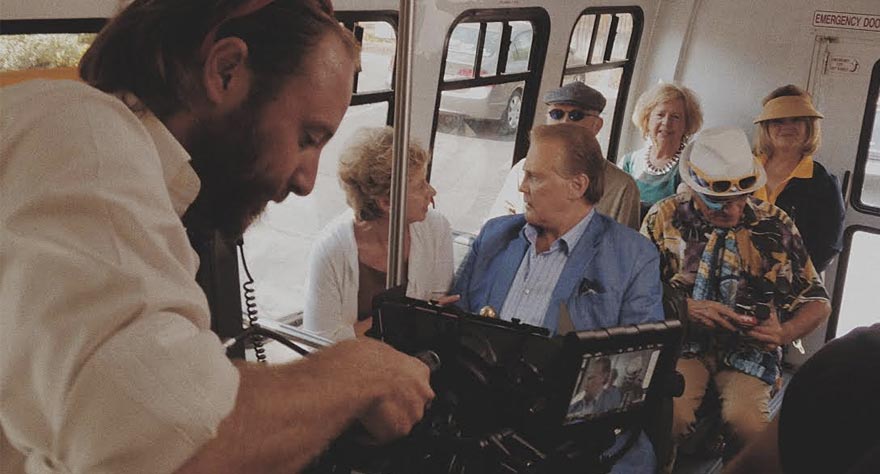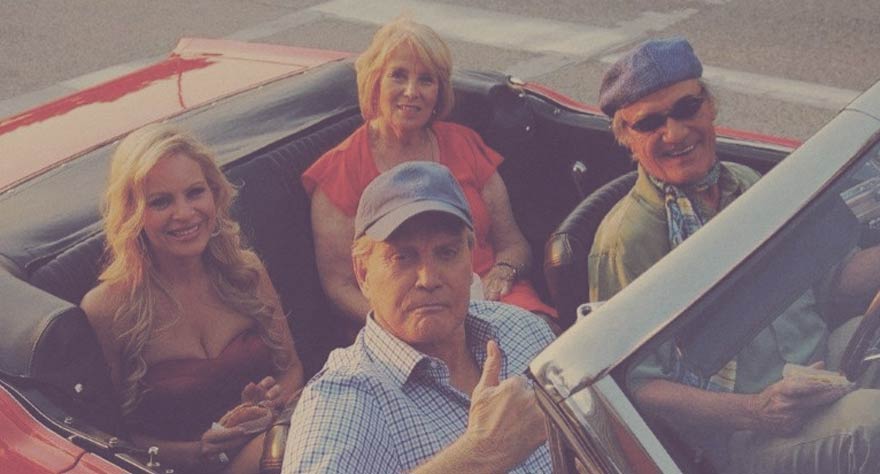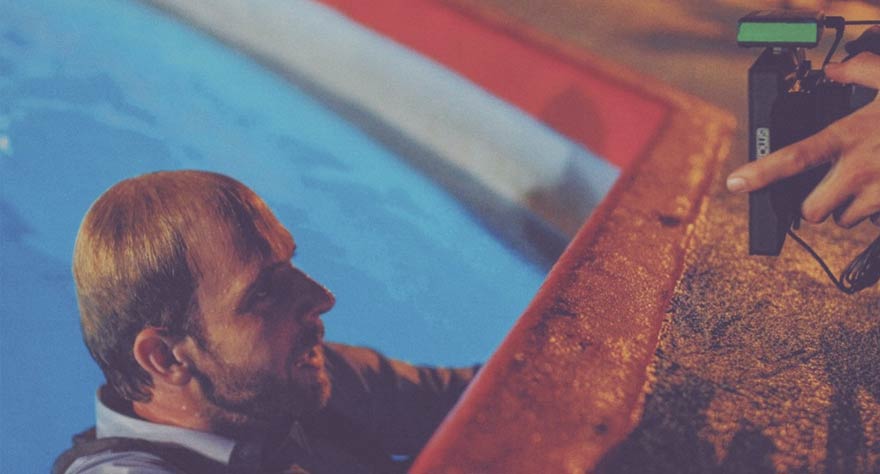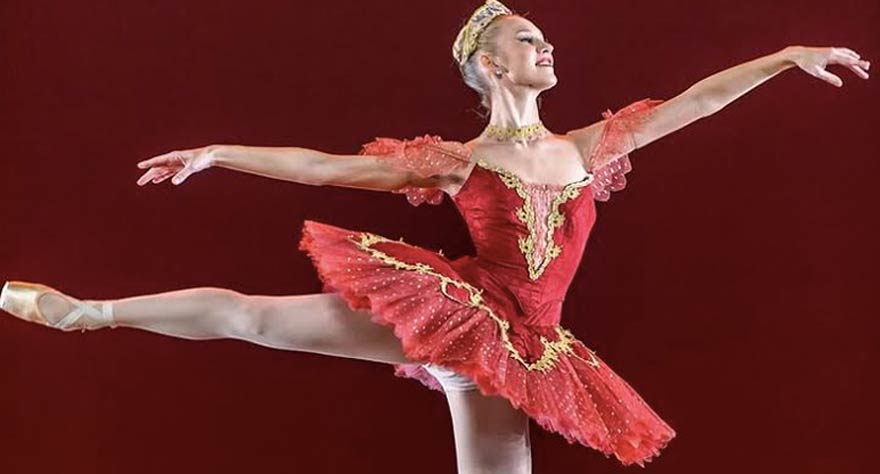Inside Indie Filmmaking: Casting Talent

I had drinks the other night with my cinematographer because, well, it was a Tuesday. Over glasses of wine he commented on the insane diversity of acting stock I worked with in my first feature film as a director. From a veteran of several hit television shows—who has probably read more lines in his life than are in the entire encyclopedia Britannica—to a classically trained British actress, to a professional ballerina who had never acted before in her life—the variety of experience on set was astounding.
Early on in the process I tried working with a casting director. After a few weeks, I wasn’t thrilled with the direction things were going, so I cast the leads myself. I don’t really recommend this—a good casting director will make a world of difference in a film, but for our budget and schedule I felt it was better to go alone. My co-producer cast minor rolls and the extras were coordinated by another crew member. Both did a fantastic job.
The two questions I am asked the most about casting are 1) How did I get Lee Majors to be in the movie, and 2) why did I decide to fill so many of the other lead roles with non-actors, like a ballerina?
Accepting the Need for Name Talent
I really wish I had a sexier story about getting Lee on the project. Everyone seems to expect one, and are oddly disappointed when I don’t deliver. As much as I’d like to say I rescued his cat from a burning tree, and in return he offered to be in my movie…the reality is the process was purely systematic—which is good, because it means anyone can do it.
I think getting name talent is crucial for the success of a film. I realize this isn’t the most popular stance to have in the indie world, but it is true nonetheless. Throwing back to the article on financing, the longevity and sustainability of your career as a filmmaker is highly dependent on your ability to deliver something back to the financiers of the film. Money supports art—that’s why we’re always asking for it—and while it is extremely difficult to turn a profit on a film, attempting to do so without a recognizable name involved makes the process next to impossible.
Face it, runners want Nike, club-goers want Grey Goose, movie audiences want Bradley Cooper. When cruising Netflix and someone has a choice between a film with an unknown and a film with someone they recognize, they will always go for the latter. Producers know this. Distributors know this. You need to know this too if you want the film to move beyond the festival circuit.
True, there are a few exceptions; but again, not enough to tip the odds in your favor. The good news however, is the system is highly structured to allow anyone to make this happen; so it’s totally realistic to plan on getting that name in your project as long as the script works and there is money backing you.

Crafting an Offer
The best thing you can do to facilitate this process—especially if you aren’t working with a connected casting director—is sign up for an IMDB-Pro account. It’s $20 a month and will give you everything you need. With this, you can see what projects actors are currently filming and are already booked for, preventing you from wasting time chasing talent that isn’t available. More importantly, you get the name and contact information of every single actor’s agent and representative.
Seriously, all you have to do is call the agent at ICM. The direct line will likely be provided on IMDB, or you ask the front desk to connect you to that agent’s office. An assistant will answer; so simply tell them you have an offer you wish to send for the agent’s client. The assistant will give you the agent’s email address, and you can tell the assistant to expect the offer in the next 30 minutes. Then, hang up, craft a simple email restating who you are and who the offer is for, attach a PDF of the offer and the script, and hit send. Follow up in a couple of days over the phone to be sure the offer was received. Then wait.
If the agent likes the offer and the talent likes the script—you will have a deal. It’s that simple. Some negotiations will definitely take place—and questions about the production will be raised.
Your offer must fit on one page.
- Introduce yourself.
- Introduce the project.
- State what is offered: the pay, the points given, travel accommodations, per-diem, set treatment and meals, transportation, SAG or no SAG, shoot dates, and anything else you are able to provide.
- State why you feel the client is a good fit for the part. Don’t show all your cards, i.e. state how desperately you want the client, because you then open yourself up to lose the negotiation. However, do be respectful by stating the privilege it would be to work with the client.
- Close by stating how long the offer stands and when you will follow-up. If you are able to find the information for the manager of the talent, let them know an offer has been sent to the agent.
After that, it is a waiting game with lots of following up.
People have told me to only make one offer at a time. I’m going to be bold and say at this point it doesn’t matter. My mentor once gave me some advice—and this applies to multiple areas—“get the job first, then decide if you want it.” If multiple offers are accepted, go with your first pick and tell the others the offer is no longer available. Trust me, this won’t burn any bridges. If you are at a level where you make your own phone calls, you’re not a big enough deal for CAA or ICM to remember you once pulled an offer from their client. However, if you only make one offer at a time and wait a month for multiple no’s, you’re going to be wasting a lot of time.
I closed my deal with Lee in under 48 hours after sending him the offer. He has an excellent agent who always takes and returns calls. There is a lot to be said about working with the smaller agencies, but don’t be afraid to approach the big dogs either.
I also learned from my mentor that actors want to work—especially more established talent, as they are more concerned with performing good material over earning a large paycheck. The studios have currently bottlenecked themselves—putting so much money into the blockbusters that there are fewer projects available; forcing many talented actors to look elsewhere for work. There is a reason so many are turning to TV drama, and why more celebrities are appearing in advertising. These folks want to work, so never feel they are unapproachable.
Professional actors of this caliber bring a great deal to the table. On an indie set, they are likely to be the ones with the most experience in-tow, adding to the overall tone of the set. Suddenly, the crew feels this is a bigger deal than they did the day before the big-talent arrived. These are professionals who show up on time, know their lines, hit their marks, knock it out and make everyone look good. Knowing you have this to work with day-to-day is a huge relief for you as a director. Apart from giving your film that name appeal, they are worth the extra buck to give you the piece of mind only a professional can bring.

Working with Non-Actors
I won’t go too into detail on why I decided to bring on non-actors to play some of the larger roles in the film. It is largely a personal preference, and is not for everyone. I’m not a director who likes to direct performances. I never want to tell an actor how to voice inflection, or what their motivation in a scene might be. As a writer, I am happy to explain elements of a script, and how a character might fit in their environment, but I feel it is up to the actor to know who their character is and why they might behave the way they do in a scene.
I think many actors show up looking for this sort of direction. A non-actor—in my experience—won’t, because the idea is foreign to them. They are more concerned in being believable, will try to understand the character in a way that is familiar to them, and as a result, exude an extreme amount of honesty into the part.
For the lead-love interest in the film I cast a very talented dancer from Ballet Idaho named Jessica Sulikowski. My DP spotted her during a book-trailer he was filming in May of 2014. She had no lines, but my DP felt she had the ‘look’ I was after. We met for a drink, and I decided to do a screen test with her. Jess nailed it, and I offered her the role. A lot of folks had strong reservations about the choice; but I knew it was the right direction to go, and it definitely paid off.
I was most interested in her background as a dancer for the following reasons:
First—in my article on writing the script—I brought up my interest in blocking and moving the actors around in a scene. A performer who is not as accustomed to spatial relevance within a set might have issues with this. When you are intensively interacting with the environment, paying attention to continuity and hitting marks on top of delivering lines can be very difficult. For Jess, this was already second nature, and had been drilled into her since she was six. She never missed a mark and her body placement or interaction with props never varied from take-to-take or between set ups. For a scene with heavy blocking this is a dream.
Second, I wrote the script with an existing soundtrack—provided by a local band called Edmond Dantes. There are two songs in the film that were the inspirations for the character Jess portrays—right down to the name, Quinn. When working with Jess to prepare for the role, I had her listen to these songs repeatedly. Since ballet is so reliant on music as a means of character exposition, I was anxious to see if she would be able to embody the music the same way it had inspired the writing.
Professional dancers are extremely committed and hard working individuals. They are artists who work insane hours to improve a craft, which—by its nature—can never be perfected. When Jess returned from vacation after receiving her first copy of the script, the thing was so worn and full of notes that her second copy had to be professionally bound and backed in vinyl.
Jess and I spent a solid two months before production working on her character. We worked to put as much of her into the role as possible—helping her find an honest way to connect with the part. We discussed how she would act and react in specific scenes, as well as what she might say. There are even a few pages I let her write herself. When we finished, she had a hard time telling the difference between herself and the character. On set, she needed next to no direction. The performances were honest, provoking and organic. No one else could have possibly approached that part, because it was 100% her.

Photo Credit: Mike Reid
Directing as an Actor
I don’t think I’ve mentioned this very much in these articles—since they are more focused on the production side of thing—but another atypical decision I made in the film was to cast myself as the lead. I never fully intended for this to happen, but it ended up occurring for the same reasons I mentioned with Jess.
When I wrote the film, I assumed I would be shooting on weekends with a volunteer crew and no money. I wrote the lead with myself in mind because I knew it would be impossible to find an unpaid actor with that much availability. (It’s the same reason why Jess’s character was originally four characters.)
After the budget expanded and Lee got involved, we did look for someone else to play the part, but I had written myself so much into the role that it was very difficult for any of us to see someone else as “Ralph.” The options presented to us weren’t super promising either. I was scared to death—fearing I might end up like Tommy Wiseau from The Room, and have people think I made a film just to be in it.
Directing and acting wasn’t as much of a problem as I feared. My DP and I have an excellent rapport and a very similar vision, so I was never worried about the frame. As for judging performances, having spent so many years as a news reporter I am very self aware of my own voice and facial patterns; allowing me to focus more on the actor I am working with. Since I typically won’t mess with a performance, I am generally just looking to get the best take. Blocking is done before hand and we roll on rehearsals—allowing me to take one last look at everything on a monitor. After that, I discovered acting was more-or-less the only time I got to relax and enjoy a moment on set; once I called cut, it was back to hustling around.
I don’t know if I will ever direct myself again. While I found I enjoy acting, I also want to have the opportunity to stand beside my DP during takes, so I will likely keep the two crafts separate from here on out.

The Importance of it All
I don’t want to sound like I am marginalizing the casting process. There is more reason for experienced talent to be involved than to simply sell a poster. Cast is huge, and having actors who can carry the parts is the most important element of a film after the script. A good casting director will be able to recognize talent, but it will take good direction and writing to allow it to come to life. On an indie project where money and resources are limited, it can be very tough to get the talent you need, so know your options and be openminded.
I didn’t just pull Jess out of a hat. I saw and I knew she had what it took to play the part. Lee wasn’t just a name on a list of recognizable actors. I understood he had the presence and the gravitas required to play the role of a suave, retirement home playboy. Don’t simply cast someone because you know they can act, do so because you know they can confidently embody the character you envision.
I fully intend to have a strong casting director for the next film I produce, and I am excited to see what options are out there. I also plan to continue working with Jess, as well as several of the other actors I had on this film. I know we are just scraping the surface with our abilities—both theirs as performers, as well as mine as a writer and director. Good talent—and recognizable talent—is out there and available. Don’t be afraid to take a chance, it’s what can, and will, make your film a body to be proud of.
